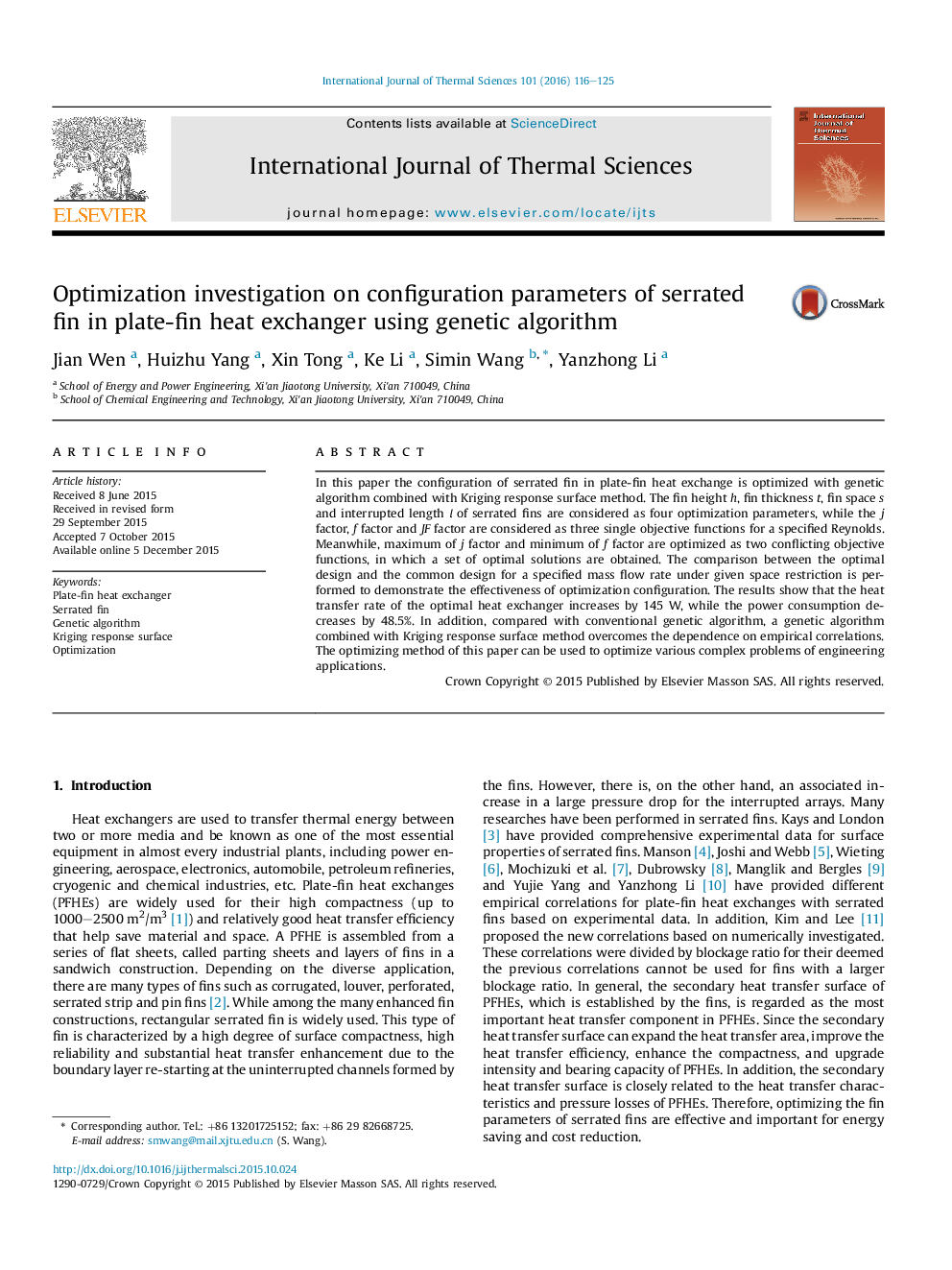| Article ID | Journal | Published Year | Pages | File Type |
|---|---|---|---|---|
| 668473 | International Journal of Thermal Sciences | 2016 | 10 Pages |
•A new method using genetic algorithm based on the Kriging response surface is firstly proposed.•The effects of fin design parameters on j factor, f factor and JF factor are analyzed.•The optimized results of the fin geometric parameters of serrated fins are obtained.•The comparison between the optimal design and the common design is performed.•The new method overcomes the dependence on empirical correlations.
In this paper the configuration of serrated fin in plate-fin heat exchange is optimized with genetic algorithm combined with Kriging response surface method. The fin height h, fin thickness t, fin space s and interrupted length Ɩ of serrated fins are considered as four optimization parameters, while the j factor, f factor and JF factor are considered as three single objective functions for a specified Reynolds. Meanwhile, maximum of j factor and minimum of f factor are optimized as two conflicting objective functions, in which a set of optimal solutions are obtained. The comparison between the optimal design and the common design for a specified mass flow rate under given space restriction is performed to demonstrate the effectiveness of optimization configuration. The results show that the heat transfer rate of the optimal heat exchanger increases by 145 W, while the power consumption decreases by 48.5%. In addition, compared with conventional genetic algorithm, a genetic algorithm combined with Kriging response surface method overcomes the dependence on empirical correlations. The optimizing method of this paper can be used to optimize various complex problems of engineering applications.
